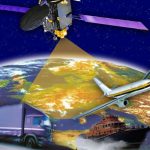The European Space Agency (ESA) awarded two contracts to Thales Alenia Space concerning system evolution of the European Geostationary Navigation Overlay Service (EGNOS).
The first contract concerns possible upgrades for EGNOS aeronautical services, designed to improve performances in order to increase landing safety under limited visibility conditions (from current CAT-I to CAT-II), over the current EGNOS footprint, focused on Europe.
The second contract will study changes required to extend its aeronautical services worldwide. Based on state-of-the-art technologies, this upgrade will call on the A-RAIM (Advanced Receiver Autonomous Integrity Monitoring) concept and the global coverage of the Galileo satnav constellation.
RAIM is an already deployed technology that assesses the integrity of signals in the receivers that are part of a global positioning system, mainly GPS. Galileo will now be incorporated in the advanced version of this concept, A-RAIM, to provide enhanced horizontal guidance performance, not possible with RAIM using only GPS. The new concept would thus provide “safety of life” aeronautical services, including approaches with vertical guidance, thanks to inputs from GPS and Galileo via EGNOS.
EGNOS, the European pathfinder for Galileo, is a satellite navigation system designed to improve positioning signals delivered by GPS and soon, Galileo. Developed by Thales Alenia Space as prime contractor, EGNOS was first deployed in 2005, began operating in open service mode in 2009 and provided Safety of Life service starting in 2011.
The GNSS R&D activities are financed by the European Commission H2020 programme. They are managed by the European Space Agency through a delegation agreement from the European Commission.
Safety of Life service
The EGNOS Safety of Life service is used to carry out precision airport approaches, especially landings, without requiring ground guidance systems.




